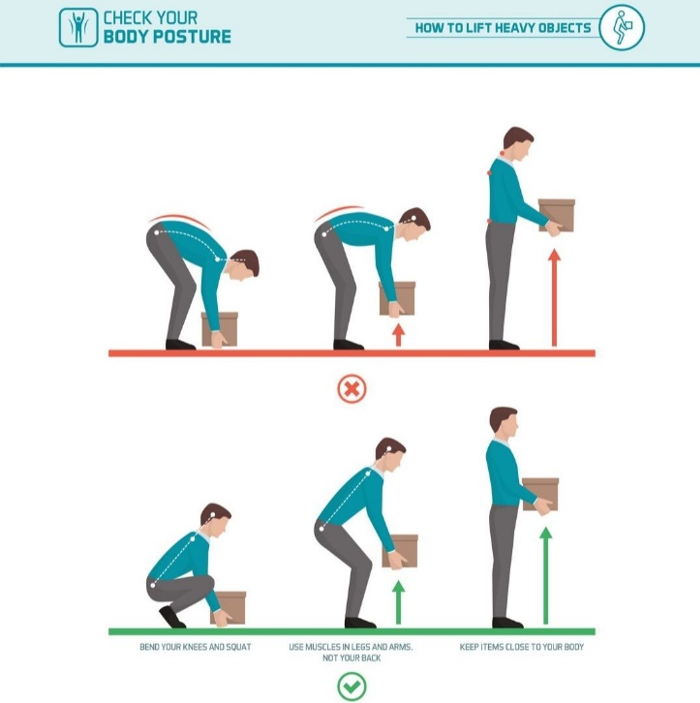The great thing about Osteopathy is that it’s not just about ridding people of their pain, it’s a way of life! As health practitioners we help people not only get rid of pain, we can also help prevent issues popping up. Yvette Coping and the team of medical professionals at Body@Boronia are huge advocates of ‘prevention is better than cure’. We like to delve deep into your lifestyle, especially around your diet, sleep patterns, hobbies, job and more, to have the best understanding we can of you and your life as a complete package, so we can help identify and resolve health issues and avoid them from happening in the future.
Work is a big part of most people’s lives and is often a significant contributing factor to their pain. This blog focuses on two key areas to ensure you are looking after yourself at work, so you can avoid injury and keep food on the table. All in the name of ‘National Safe Work Month’! Read on to ensure you are giving yourself the best possible chance of staying injury-free at work.
Lifting Posture
- Plan ahead to make sure you have a clear path from A to B for the object you are carrying. Make sure the object is stable and is not going to topple over whilst you are carrying it.
- Get close to the object and with your feet hip-width apart, and whilst keeping a straight back, bend at the hips and knees to get low to the ground (key words here – “STRAIGHT BACK”!).
- Ensure you have a firm grip of the object and whilst keeping your back straight (there it is again!), lift from your hips and knees until you reach an upright position.
- Always move using your feet rather than twisting or leaning through your back.
- Always keep the object close to your body. Never try to hold it out in front of you with your arms, as this places a great deal of stress on your shoulders, neck and back.
- Always get help from another person(s) if the object is too heavy for you alone. It is NEVER worth the risk of injury by tackling a task that may be slightly beyond your physical capabilities.
Desk set-up
Postural strain from a seated desk job is another common work-related injury we treat. To ensure you are sitting pretty, our advice to you is…
- Postural strain from a seated desk job is another common work-related injury we treat. To ensure you are sitting pretty, our advice to you is…
- Sit with relaxed shoulders, elbows bent at 90 degrees and avoid cocking the wrists back when typing (adjust your desk height to suit this if possible).
- Adjust the tilt of your chair to allow the hips to sit at an open angle of 100-110 degrees.
- Adjust the backrest of the chair to ensure you are supported in an upright position whilst seated.
- Avoid slouching back on to your tailbone. Instead, gently roll your pelvis forward to sit on your sitting bones and bring the curve of your low back into its natural position.
- Take regular breaks from sitting. Get up out of your chair every 30-45 minutes to allow your body to move and stretch.
So there you have it. Our skills are much more than just our hands, we’re full of good advice too! No matter what job you do, we’ll help you break it down to make sure you are getting the most out of it and not putting yourself at risk of a workplace injury. Here’s to a happy workday, every day!
References
- Employsure. 2019. Reduce the risks associated with manual handling. [Online]. Available from: https://employsure.com.au/blog/reduce-risks-associated-manual-handling/. [Accessed 21 September 2019].
- The University of Western Australia. 2016. Computer workstation ergonomics. [Online]. Available from: http://www.safety.uwa.edu.au/topics/physical/ergonomics/workstation. [Accessed 21 September 2019].
- Safe Work Australia. 2019. National safe work month. [Online]. Available from: https://www.safeworkaustralia.gov.au/national-safe-work-month. [Accessed 21 September 2019].







